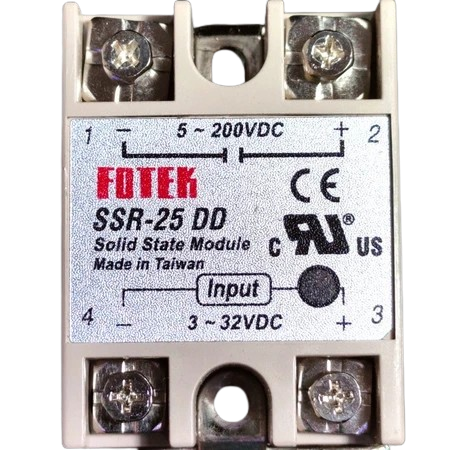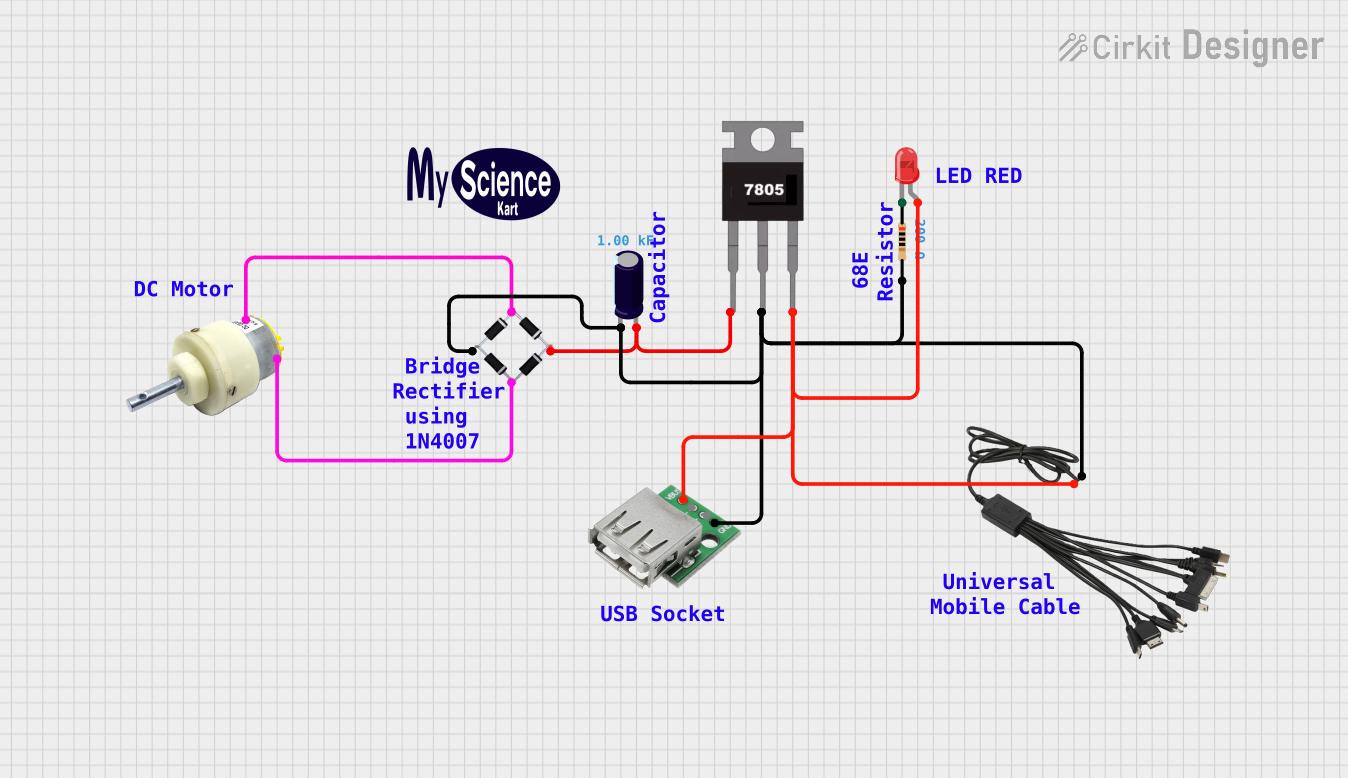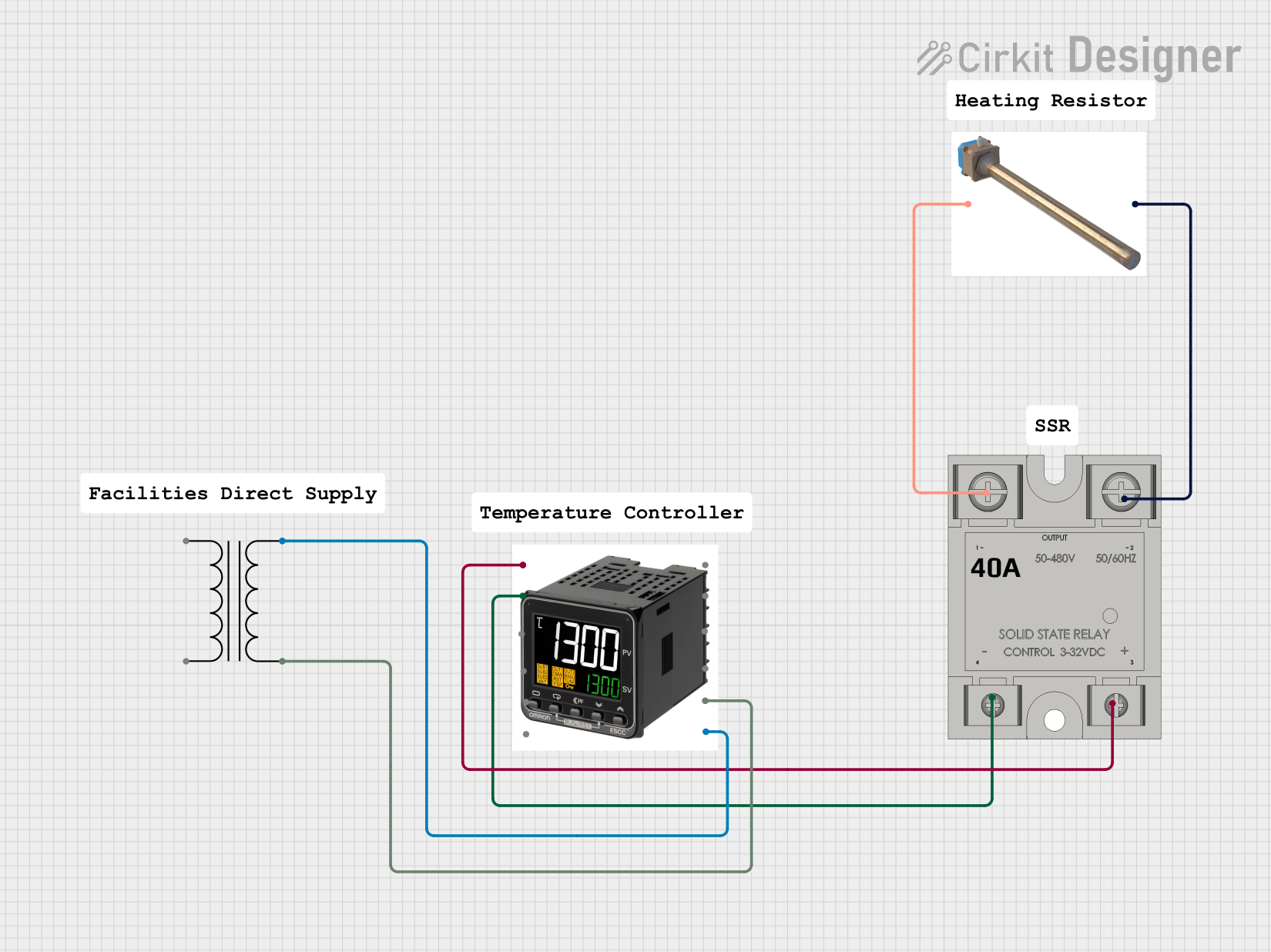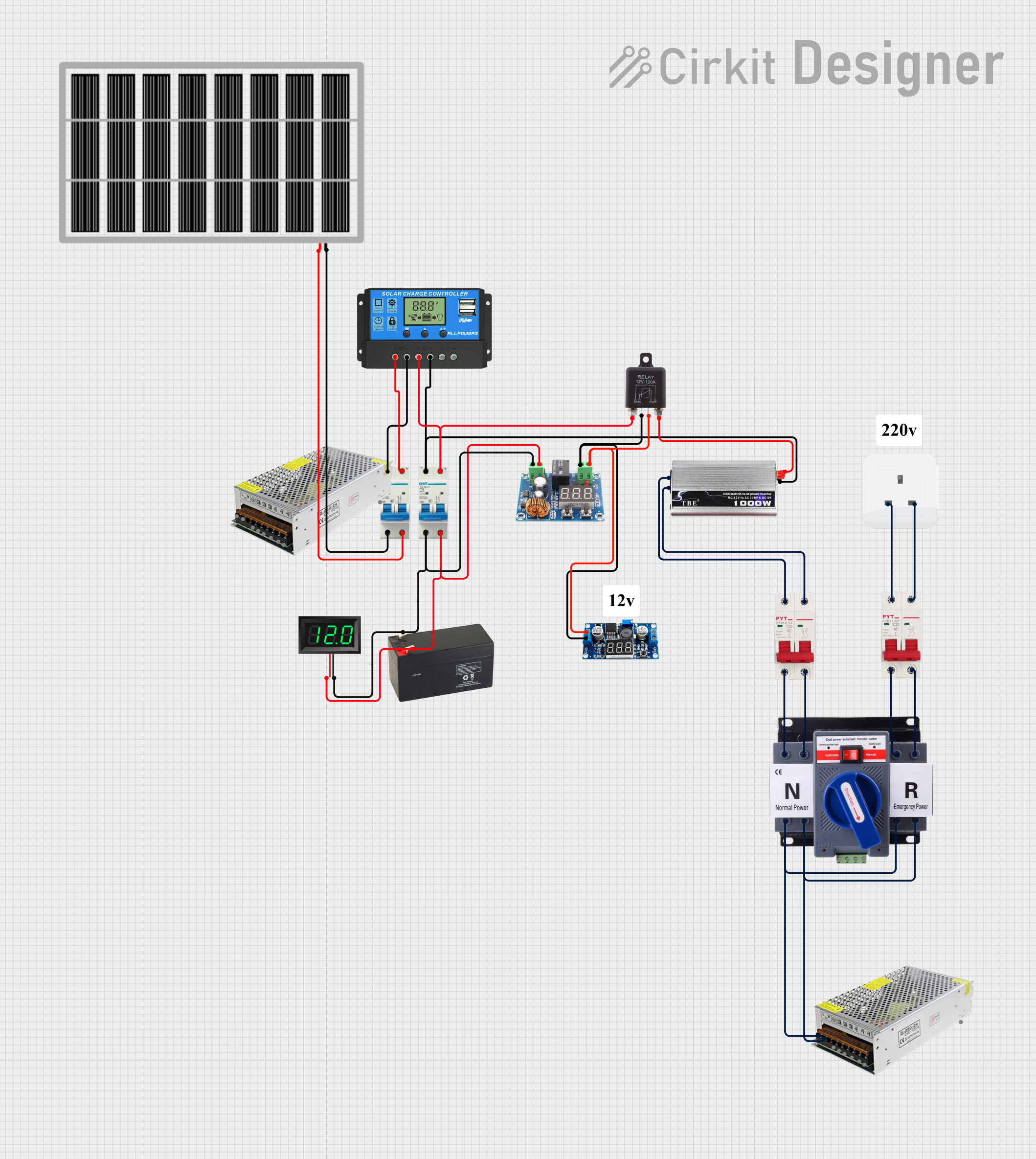
How to Use SSR DC - DC: Examples, Pinouts, and Specs

 Design with SSR DC - DC in Cirkit Designer
Design with SSR DC - DC in Cirkit DesignerIntroduction
The Fotek SSR DC-DC is a Solid State Relay (SSR) designed specifically for DC applications. It enables the control of high-voltage DC loads using low-voltage control signals. Unlike traditional mechanical relays, the SSR DC-DC offers fast switching, high reliability, and no mechanical wear, making it ideal for applications requiring frequent switching or long operational lifespans.
Explore Projects Built with SSR DC - DC

 Open Project in Cirkit Designer
Open Project in Cirkit Designer
 Open Project in Cirkit Designer
Open Project in Cirkit Designer
 Open Project in Cirkit Designer
Open Project in Cirkit Designer
 Open Project in Cirkit Designer
Open Project in Cirkit DesignerExplore Projects Built with SSR DC - DC

 Open Project in Cirkit Designer
Open Project in Cirkit Designer
 Open Project in Cirkit Designer
Open Project in Cirkit Designer
 Open Project in Cirkit Designer
Open Project in Cirkit Designer
 Open Project in Cirkit Designer
Open Project in Cirkit DesignerCommon Applications and Use Cases
- Industrial automation systems
- Motor control in DC circuits
- Battery management systems
- Solar power systems
- LED lighting control
- Robotics and mechatronics
Technical Specifications
The following table outlines the key technical details of the Fotek SSR DC-DC:
| Parameter | Value |
|---|---|
| Manufacturer | Fotek |
| Part ID | Not specified |
| Input Control Voltage | 3-32 V DC |
| Output Voltage Range | 5-220 V DC |
| Maximum Output Current | 40 A |
| Switching Speed | ≤ 10 ms |
| Isolation Voltage | ≥ 2500 V AC |
| Operating Temperature | -30°C to +80°C |
| Mounting Type | Panel-mounted |
| Weight | ~120 g |
Pin Configuration and Descriptions
The Fotek SSR DC-DC typically has four terminals, as described in the table below:
| Pin Number | Label | Description |
|---|---|---|
| 1 | Input (+) | Positive terminal for the control signal (3-32 V DC). |
| 2 | Input (-) | Negative terminal for the control signal (ground). |
| 3 | Output (+) | Positive terminal for the DC load. |
| 4 | Output (-) | Negative terminal for the DC load. |
Usage Instructions
How to Use the SSR DC-DC in a Circuit
Connect the Control Signal:
- Attach the positive control signal (3-32 V DC) to the
Input (+)terminal. - Connect the ground of the control signal to the
Input (-)terminal.
- Attach the positive control signal (3-32 V DC) to the
Connect the Load:
- Connect the positive terminal of the DC load to the
Output (+)terminal. - Connect the negative terminal of the DC load to the
Output (-)terminal.
- Connect the positive terminal of the DC load to the
Power the Circuit:
- Ensure the control signal voltage is within the specified range (3-32 V DC).
- When the control signal is applied, the SSR will switch the DC load on.
Mounting:
- Secure the SSR to a heat sink or panel to ensure proper heat dissipation, especially for high-current applications.
Important Considerations and Best Practices
- Heat Dissipation: Use a heat sink or cooling fan if the relay operates near its maximum current rating to prevent overheating.
- Voltage Spikes: For inductive loads (e.g., motors), use a flyback diode across the load to suppress voltage spikes.
- Polarity: Ensure correct polarity for both the control signal and the load connections to avoid damage.
- Isolation: Verify that the control and load circuits are properly isolated to prevent electrical interference.
Example: Using SSR DC-DC with Arduino UNO
The following example demonstrates how to control a DC motor using the SSR DC-DC and an Arduino UNO:
// Example: Controlling a DC motor with Fotek SSR DC-DC and Arduino UNO
const int ssrPin = 9; // Pin connected to the SSR control input
void setup() {
pinMode(ssrPin, OUTPUT); // Set the SSR pin as an output
}
void loop() {
digitalWrite(ssrPin, HIGH); // Turn the SSR (and motor) ON
delay(5000); // Keep the motor ON for 5 seconds
digitalWrite(ssrPin, LOW); // Turn the SSR (and motor) OFF
delay(5000); // Keep the motor OFF for 5 seconds
}
Note:
- Connect the
ssrPin(pin 9) to theInput (+)terminal of the SSR. - Connect the Arduino ground (GND) to the
Input (-)terminal of the SSR.
Troubleshooting and FAQs
Common Issues and Solutions
SSR Not Switching On:
- Cause: Control signal voltage is too low.
- Solution: Ensure the control signal voltage is within the 3-32 V DC range.
Overheating:
- Cause: Excessive current or insufficient heat dissipation.
- Solution: Use a heat sink or cooling fan, and ensure the load current does not exceed the SSR's maximum rating.
Load Not Operating:
- Cause: Incorrect wiring or polarity.
- Solution: Double-check all connections and ensure correct polarity for both the control and load circuits.
Voltage Drop Across SSR:
- Cause: Internal resistance of the SSR.
- Solution: Verify that the voltage drop is within acceptable limits for your application.
FAQs
Q1: Can the SSR DC-DC be used with AC loads?
No, the SSR DC-DC is designed specifically for DC loads. For AC loads, use an AC-AC or DC-AC SSR.
Q2: Is the SSR DC-DC suitable for PWM control?
Yes, the SSR can handle PWM signals, but ensure the switching frequency is within the relay's response time (≤ 10 ms).
Q3: How do I protect the SSR from voltage spikes?
For inductive loads, use a flyback diode across the load to suppress voltage spikes and protect the SSR.
Q4: Can I use the SSR without a heat sink?
For low-current applications, a heat sink may not be necessary. However, for high-current loads, a heat sink is strongly recommended to prevent overheating.